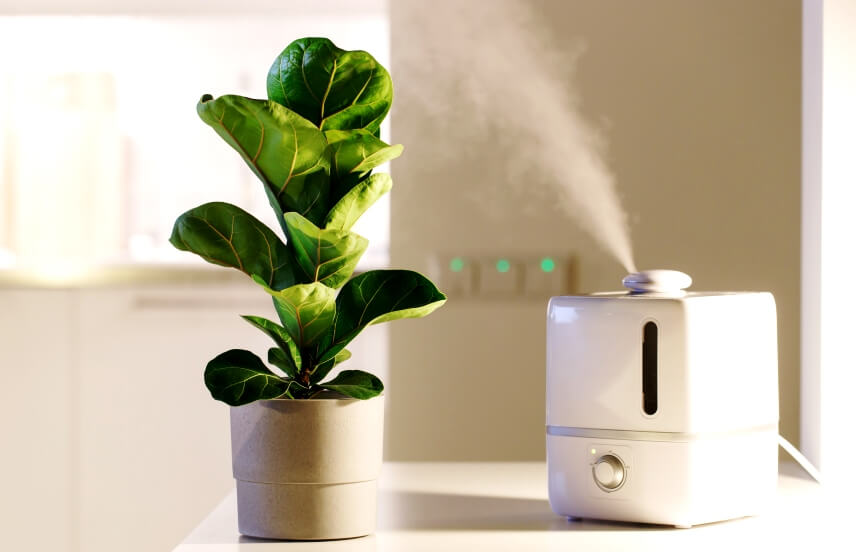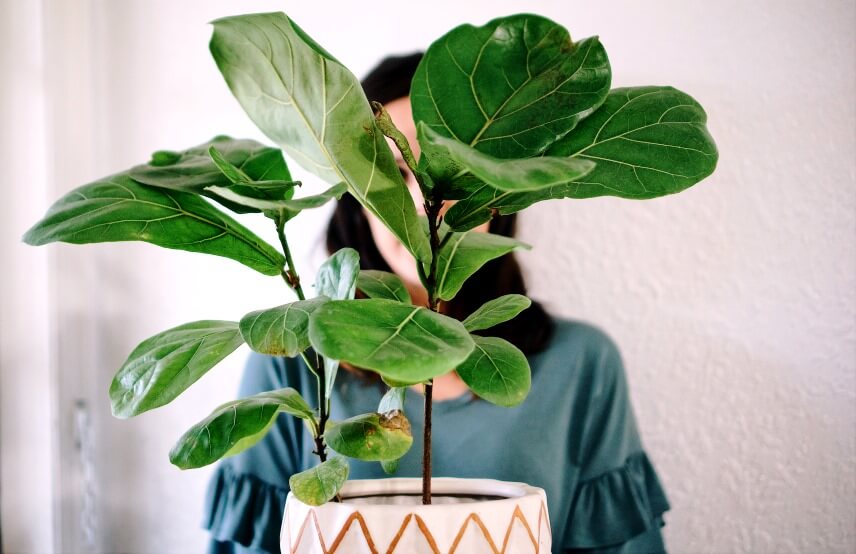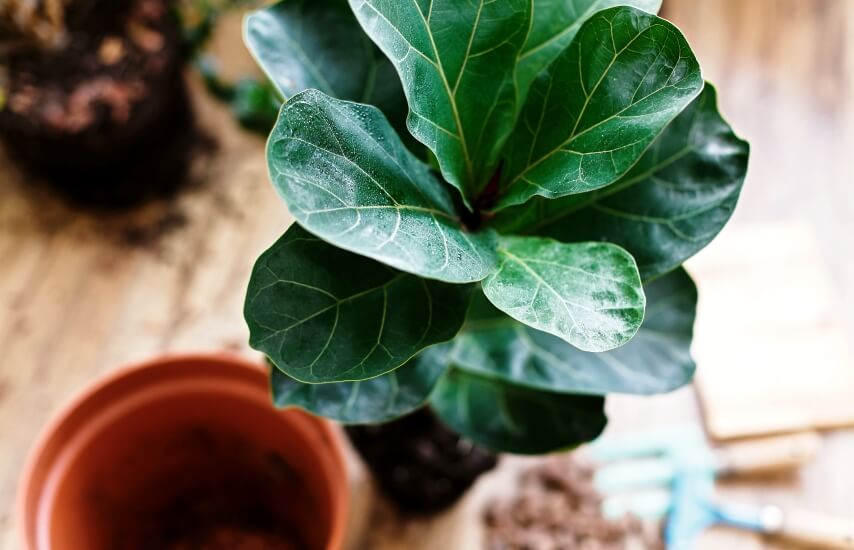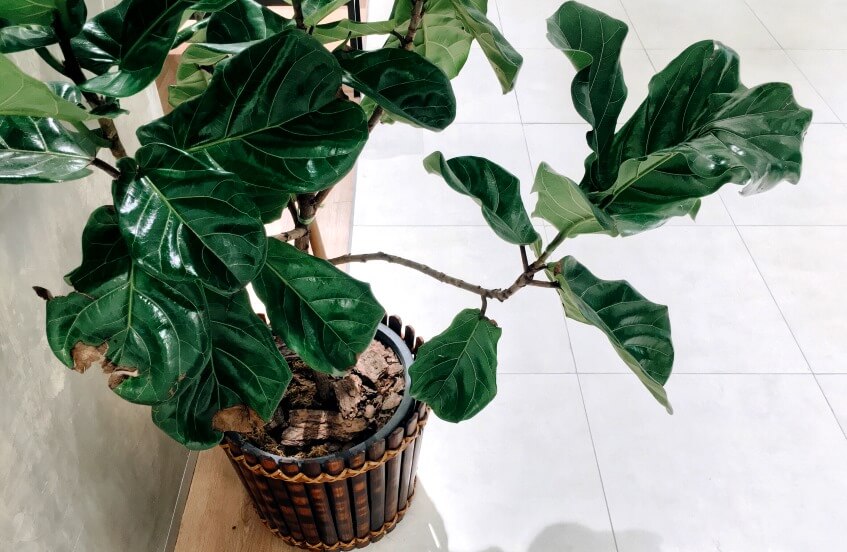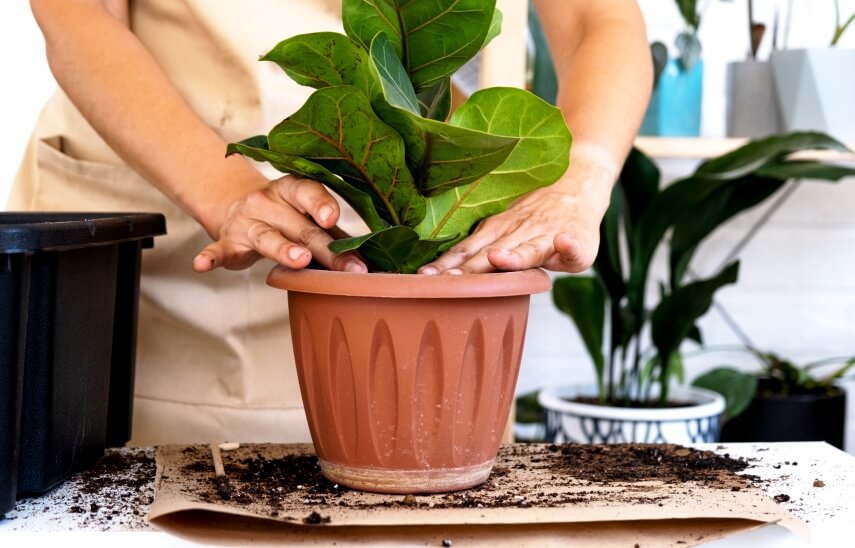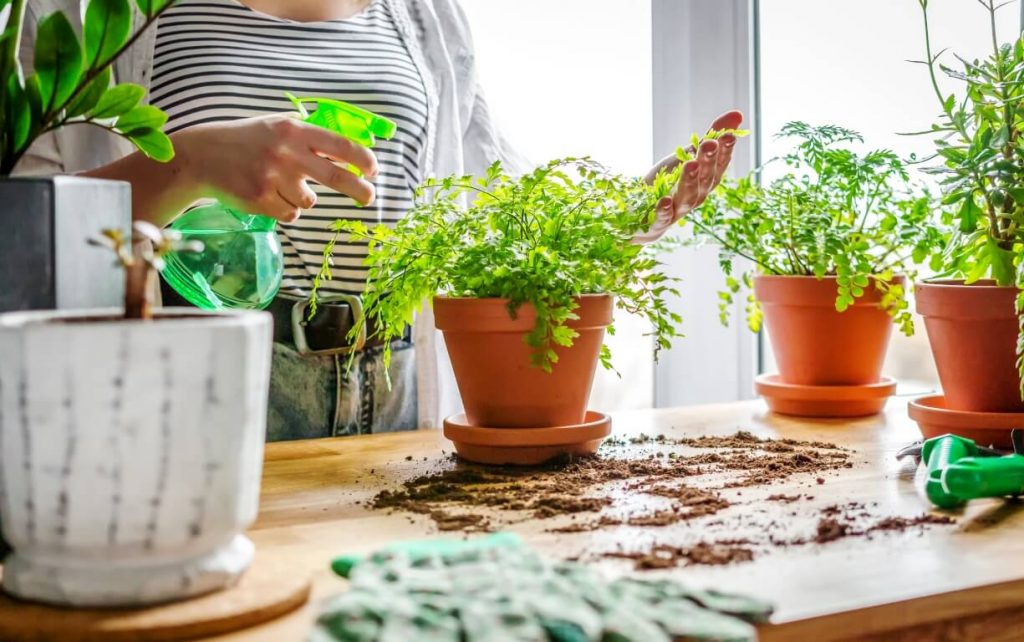Fiddle leaf fig (Ficus lyrata) is a well-known indoor tree with exceptionally big, deeply veined, glossy, violin-shaped leaves that grow upright on a smooth trunk. This upright leafy tree can provide your house or garden with an elegant backdrop of luxuriant fresh foliage thanks to its glossy, wide, violin-shaped leaves and noticeable veins.
The fiddle leaf fig plant has many benefits. In this article, we will discuss some of the most important Fiddle Leaf Fig benefits.
If you are interested in plant benefits, you can also read
<<Fig leaf Benefits>> and <<Aglaonema benefits>> articles.
About Fiddle Leaf Fig
The fiddle leaf fig, or Ficus lyrata, is a native of the tropical lowlands of western Africa. It belongs to the Moraceae family, which also contains fig and mulberry trees. It derives its common name from the large, elongated fiddle-shaped green leaves on which it grows.
The Fiddles and other members of its family are notable, with alternately orientated leaves that exhibit foliar polymorphisms. This suggests that the leaf shapes may change depending on the stage of life. Actually, most plants’ leaves retain the same shapes throughout their lives [1].
Note: This lovely plant is toxic to cats and dogs.
Fiddle Leaf Fig benefits
The benefits of Ficus lyrata for the house have gained increasing attention recently. It is simple to understand why Ficus lyrata is a good choice if you want to invest in some greenery, as it can both purify the air and favor a room’s Feng Shui. Some of the most significant fiddle leaf fig benefits are as below:
Air purification
In addition to adding color to your interior, indoor plants can benefit the environment by cleansing the air. By absorbing carbon dioxide and exhaling oxygen, indoor plants purge the air of pollutants.
The NASA Clean Air Study from 1989 found that ficus plants like Ficus lyrata are good air purifiers by removing harmful contaminants. It is worth mentioning that NASA’s clean air study did not specifically assess Ficus lyrate. In fact, they examined two of the fiddle leaf fig tree’s close relatives, Ficus elastica (rubber tree plant) and Ficus Benjamina (weeping fig).
The NASA study found that rubber tree plants successfully removed hazardous formaldehyde particles from the air. It also showed that weeping fig plants can remove Toluene, xylene, and toxic formaldehyde from the air.
Another study indicated that fiddle leaf fig plants could take in the lead and PAH. These two hazardous chemicals are water-soluble (polycyclic aromatic hydrocarbons). Lead is thought to be able to lower children’s IQ levels by up to 5 (five) years, and PAH has the potential to cause cancer.
Aesthetic value
One of the fiddle leaf fig benefits is its excellent aesthetic value, especially when grown inside.
The Fiddle has imposing lyre-shaped leaves that are large and dark green. In contrast to their delicate, undulating edges, the leaves have leathery textures and deep veins.
Drought-tolerant
Although persistent, regular care is advised, fiddle leaf figs are ideal for owners who frequently forget to water them. Fiddle leaf fig is an appropriate choice if you are busy or forgetful, as this drought-tolerant plant can handle going on without water for a while.
Fiddle leaf figs are quite susceptible to root rot; water is only required when the top inch or two of the soil is dry. Make sure your fiddle leaf is placed in well-draining soil.
Therapeutic Value
Another significant fiddle leaf fig benefit is that it has several health benefits. The fruit, root, and leaves of the fiddle leaf fig can be used to cure digestive issues (colic, indigestion, loss of appetite, and diarrhea). Additionally, it is used to treat inflammatory, cardiovascular, and respiratory illnesses (including sore throats, coughs, and bronchial issues)[2].
The polyphenols, tannins, flavonoids, and triterpenoids found in fiddle leaf fig plants give them antimicrobial and antibacterial capabilities [3]. Additionally, flavonoids and phenols, two powerful antioxidants, which are abundant in this plant, can reduce cholesterol and treat liver fibrosis [4].
Low-maintenance
For both beginners and experts, the fiddle leaf fig is an excellent plant option as long as these plants are exposed to lots of light and relative humidity.
Fiddle leaf figs are simple to care for. So, you should not have any trouble getting your Fiddle Leaf to flourish if you occasionally maintain a regular watering routine and fertilize it.
Easy propagation
Ficus lyrata is simple to propagate and can be rooted in either water or ready-made soil. Fiddle leaf fig leaves can be rooted but will not develop stems and become entire plants. You need to take a cutting from the plant that comprises between 3 and 6 inches of stem in order to propagate a fiddle leaf fig that will eventually develop and mature.
A feng shui plant
Fiddle Leaf Fig plants are considered to be good Feng Shui plants because of their rounded, gently edged leaves. These plants are thought to be able to help you counteract any bad or negative energy that may be present in your house or workplace due to gloomy areas and blocked corners.
In addition, the fiddle leaf fig represents prosperity and good fortune. According to the Bagua map, if you place it in your home’s southeast and north corners, you can have good fortune and a plethora of prosperity [5].
Stress reduction& productivity booster
A study published in the Journal of Environmental Horticulture demonstrates that interacting with houseplants enhances cognitive function by enhancing memory and focus.
According to this study, indoor plants like Ficus lyrata at work locations can improve productivity and facilitate employee work.
Rapid growth
Under ideal circumstances, fiddle leaf figs can grow two to three feet yearly. It is extremely astounding, considering that it is taller than most house plants. One of the things that seems to inspire novice gardeners is their rapid growth [6].
You should keep an eye on the pot size and the space they take up as they grow so quickly. These plants usually require an area of 7 feet by 4 feet to grow well. Anything impeding the plant’s growth should be kept out of the room.
Acoustic properties
That is not all the benefits of Fiddle leaf figs. These plants are not only lovely, but they also aid in enhancing the acoustics in a house or place of business. This is because of their leaves’ distinctive size and form.
Fiddle leaf figs’ leaves, stems, and branches aid in absorbing sound waves propagating across an enclosed space. Their Large, broad leaves offer remarkably effective sound wave absorption, enhancing the acoustics of your indoor space.



